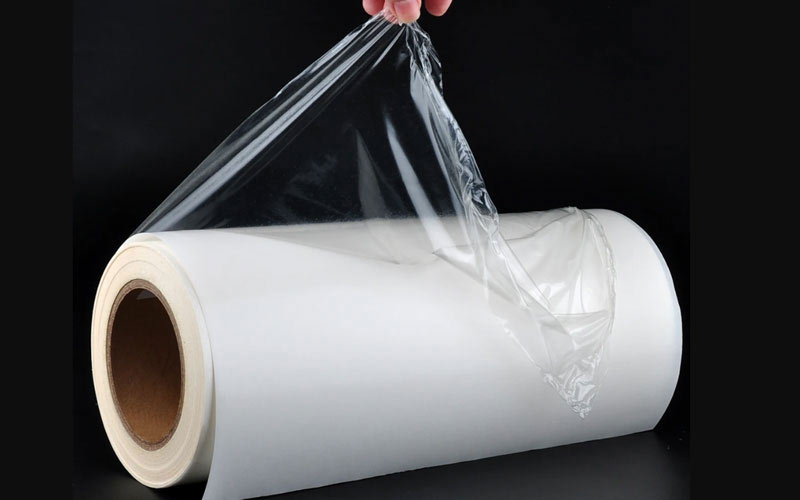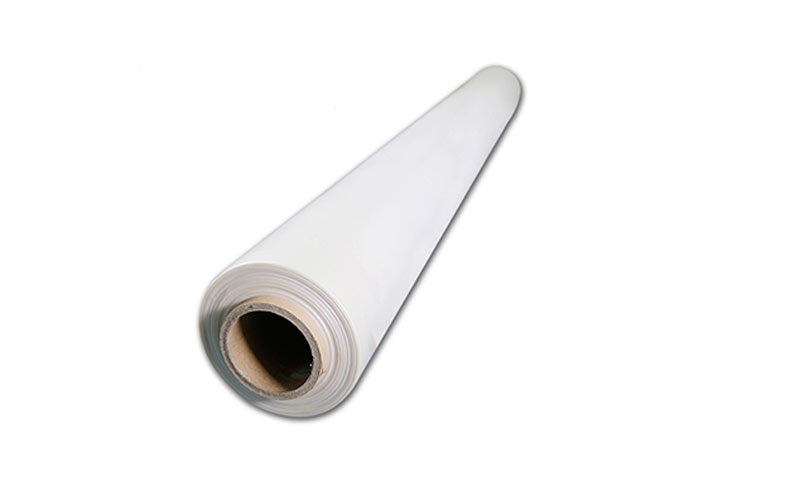For those who are familiar with hot melt adhesive films, TPU (thermoplastic polyurethane) hot melt adhesive film stands out as a unique type due to its broad melting point range and exceptional elasticity. Unlike conventional single-melting-point adhesives, TPU hot melt adhesive film can be engineered to respond to various temperature thresholds, making it suitable for a wide range of applications across industries such as textiles, electronics, automotive, medical, and footwear. In this article, we’ll explore the melting and bonding temperatures of TPU hot melt adhesive films, their classifications based on temperature sensitivity, and how to select the right type based on application needs.

Understanding TPU Hot Melt Adhesive Films
Before diving into temperature specifics, it’s helpful to understand what TPU hot melt adhesive films are. These are thermoplastic bonding materials that melt under heat and solidify upon cooling to create strong, durable bonds between substrates. Unlike traditional adhesives, hot melt films offer solvent-free bonding, faster processing speeds, and cleaner production environments.
TPU hot melt adhesive films are particularly valued for their:
- High elasticity
- Excellent resistance to washing and dry cleaning
- Good adhesion to various substrates (e.g., fabrics, plastics, metals)
- Ability to perform under a wide range of environmental conditions
What sets TPU films apart is their tunable melting temperature, which allows manufacturers to customize formulations for different processing and end-use requirements.
Classification by Temperature Range
TPU hot melt adhesive films can be broadly classified into three categories based on their melting and bonding temperature ranges:
- Low-temperature TPU hot melt adhesive films
- Medium-temperature TPU hot melt adhesive films
- High-temperature TPU hot melt adhesive films
Each of these has its own set of features and suitable applications, largely defined by its thermal behavior during bonding.
Low-Temperature TPU Hot Melt Adhesive Films
Melting and Bonding Characteristics:
Low-temperature TPU hot melt adhesive films are formulated to melt at relatively low temperatures, generally around 70°C. However, for effective bonding performance, the actual bonding (lamination or heat pressing) temperature is typically set a bit higher, around 100°C.
Application Scenarios:
This category is ideal for temperature-sensitive substrates such as delicate fabrics, paper-based materials, and soft plastics. Their low activation energy also makes them suitable for bonding components that might degrade under high heat, like coated textiles or thin polymer sheets.
Advantages:
- Quick activation
- Lower energy consumption
- Minimal thermal impact on substrates
Limitations:
- May not perform well in high-heat environments
- Lower resistance to repeated washing cycles compared to high-temp films
Medium-Temperature TPU Hot Melt Adhesive Films
Melting and Bonding Characteristics:
These films strike a balance between low- and high-temp types. Their melting point typically sits around 110°C, while the optimal bonding temperature ranges from 130°C to 150°C, depending on the specific formulation and materials involved.
Application Scenarios:
Medium-temperature TPU films are used in a wider range of applications where more thermal resistance is needed, but high-temp adhesives would be overkill. Common applications include:
- Sportswear lamination
- Medical garment assembly
- Automotive interior components
- Electronics cushioning foam bonding
Advantages:
- Balanced bonding strength and flexibility
- Moderate resistance to water, chemicals, and heat
- Compatible with a variety of heat-press and roller-laminating machines
Limitations:
- May still be unsuitable for high-heat or industrial-grade applications
- Requires more energy compared to low-temp adhesives
High-Temperature TPU Hot Melt Adhesive Films
Melting and Bonding Characteristics:
High-temperature TPU hot melt adhesive films are engineered for extreme environments. Their melting points are approximately 150°C, and their bonding or fusing temperatures typically fall within the 170°C to 190°C range.
Application Scenarios:
These films are used in situations that demand excellent thermal and mechanical stability. Examples include:
- High-performance sports gear
- Industrial fabrics
- Automotive under-hood insulation components
- Specialized protective clothing
Advantages:
- Outstanding bonding strength even under stress
- Excellent performance in high-temperature environments
- Superior water, chemical, and abrasion resistance
Limitations:
- Requires specialized high-temperature processing equipment
- Not suitable for temperature-sensitive substrates
How to Choose the Right TPU Film by Melting Temperature
When selecting the proper TPU hot melt adhesive film for your application, the melting and bonding temperature is a critical parameter. However, other considerations should also come into play:
1. Substrate Sensitivity
Delicate materials like silk, nylon, or memory foam require low-temperature TPU adhesives to avoid thermal degradation or discoloration.
2. Mechanical Stress and Elasticity Requirements
For applications that involve stretching, bending, or frequent washing (e.g., sportswear or shoes), a mid- to high-temperature TPU film with superior elasticity and bonding strength is essential.
3. Environmental Conditions
If your bonded product must withstand high temperatures or outdoor exposure (UV, humidity), high-temperature TPU films will provide better durability and resistance.
4. Production Process Compatibility
Evaluate the capabilities of your existing lamination, pressing, or heating equipment. Films that require bonding above 180°C may necessitate upgrades to machinery or safety protocols.
Benefits of Using TPU Hot Melt Films in Bonding Applications
Regardless of the specific temperature class, TPU films offer several benefits over other adhesive systems:
- Eco-friendly: Solvent-free and safe for the environment
- Efficient: Faster curing and reduced processing time
- Flexible: Superior elasticity ensures comfort and longevity
- Durable: Strong resistance to washing, dry cleaning, and environmental factors
- Clean: Leaves no residue or glue seepage, enhancing the appearance of the final product
These attributes make TPU hot melt adhesive films a preferred solution in performance-driven industries.

Common Mistakes to Avoid
When working with TPU hot melt adhesive films, improper use can lead to subpar bonding or material damage. Here are some mistakes to avoid:
- Using the wrong bonding temperature: Always follow technical data sheets for correct bonding temperatures.
- Overheating the substrate: Excessive heat can warp, shrink, or burn the materials you’re trying to bond.
- Inadequate pressure: TPU films require uniform and sufficient pressure during bonding to ensure a strong interface.
- Skipping pre-treatment: Some substrates may require surface treatment (e.g., corona, plasma, or primer) to improve adhesion.
Conclusion
TPU hot melt adhesive films are versatile and highly adaptable bonding materials widely used in industries where strength, flexibility, and clean bonding are essential. Their melting and bonding temperatures vary depending on the formulation and intended application, falling broadly into low-, medium-, and high-temperature categories:
- Low-temperature TPU films: Melting around 70°C; bonding near 100°C
- Medium-temperature TPU films: Melting around 110°C; bonding around 140°C
- High-temperature TPU films: Melting around 150°C; bonding up to 180°C
Understanding the melting and bonding characteristics of each type ensures optimal performance, safety, and durability in your final product. Always choose the film that best aligns with your materials, process capabilities, and environmental conditions.
Whether you’re designing sports apparel, medical wear, automotive interiors, or electronic components, there’s a TPU hot melt adhesive film with the right thermal profile to meet your needs.
